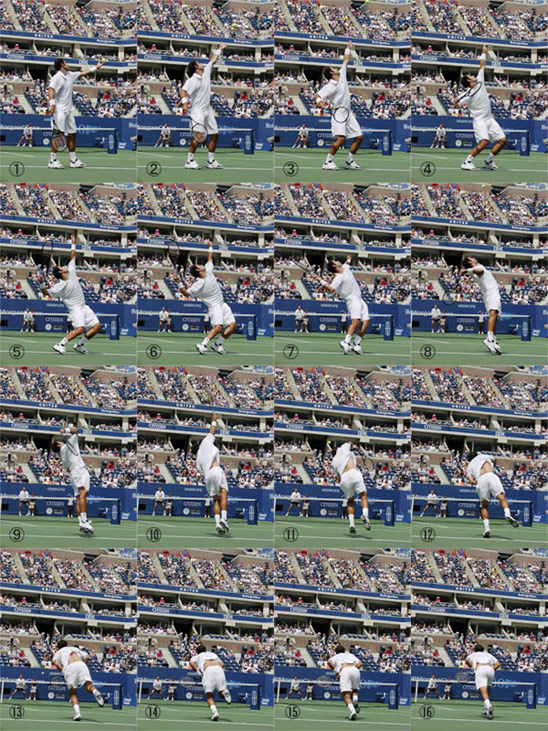Chas Tennis
G.O.A.T.
Supination occurs during the tennis serve.
When and why is supination occurring on the tennis serve?
1) for positioning of the arm
2) to stretch muscles
3) to allow added range for pronation
4) as a consequence of some forceful motion
5) other.....?
The video on this site briefly discusses supination, pronation and internal shoulder rotation.
http://iws.punahou.edu/user/lcouillard/2008/08/pronation_supination.html
Illustrations and especially videos that indicate when meaningful supination is occurring would be very useful.
For example, at what time in this video is supination occurring? The Vimeo time scale is not consistent so that on one play 9 seconds is indicated while on another play 8 seconds is indicated. I think supination occurs when the racket starts the up swing, 8 or 9 seconds indicated. Describe phase of service motion.
https://vimeo.com/63688134
Recent thread on supination on the serve by luvforty.
http://tt.tennis-warehouse.com/showthread.php?t=453267&highlight=supination+serve&page=3
(In usage, supination and pronation are often used to mean either an anatomical joint position or a rotational direction. It is not always clear what is intended so it would be helpful to clarify your usage. I'm mostly using 'supination' to mean rotation in the direction of supination. Also, I assume that supination involves only the forearm from the elbow out to the hand. )
When and why is supination occurring on the tennis serve?
1) for positioning of the arm
2) to stretch muscles
3) to allow added range for pronation
4) as a consequence of some forceful motion
5) other.....?
The video on this site briefly discusses supination, pronation and internal shoulder rotation.
http://iws.punahou.edu/user/lcouillard/2008/08/pronation_supination.html
Illustrations and especially videos that indicate when meaningful supination is occurring would be very useful.
For example, at what time in this video is supination occurring? The Vimeo time scale is not consistent so that on one play 9 seconds is indicated while on another play 8 seconds is indicated. I think supination occurs when the racket starts the up swing, 8 or 9 seconds indicated. Describe phase of service motion.
https://vimeo.com/63688134
Recent thread on supination on the serve by luvforty.
http://tt.tennis-warehouse.com/showthread.php?t=453267&highlight=supination+serve&page=3
(In usage, supination and pronation are often used to mean either an anatomical joint position or a rotational direction. It is not always clear what is intended so it would be helpful to clarify your usage. I'm mostly using 'supination' to mean rotation in the direction of supination. Also, I assume that supination involves only the forearm from the elbow out to the hand. )
Last edited:


